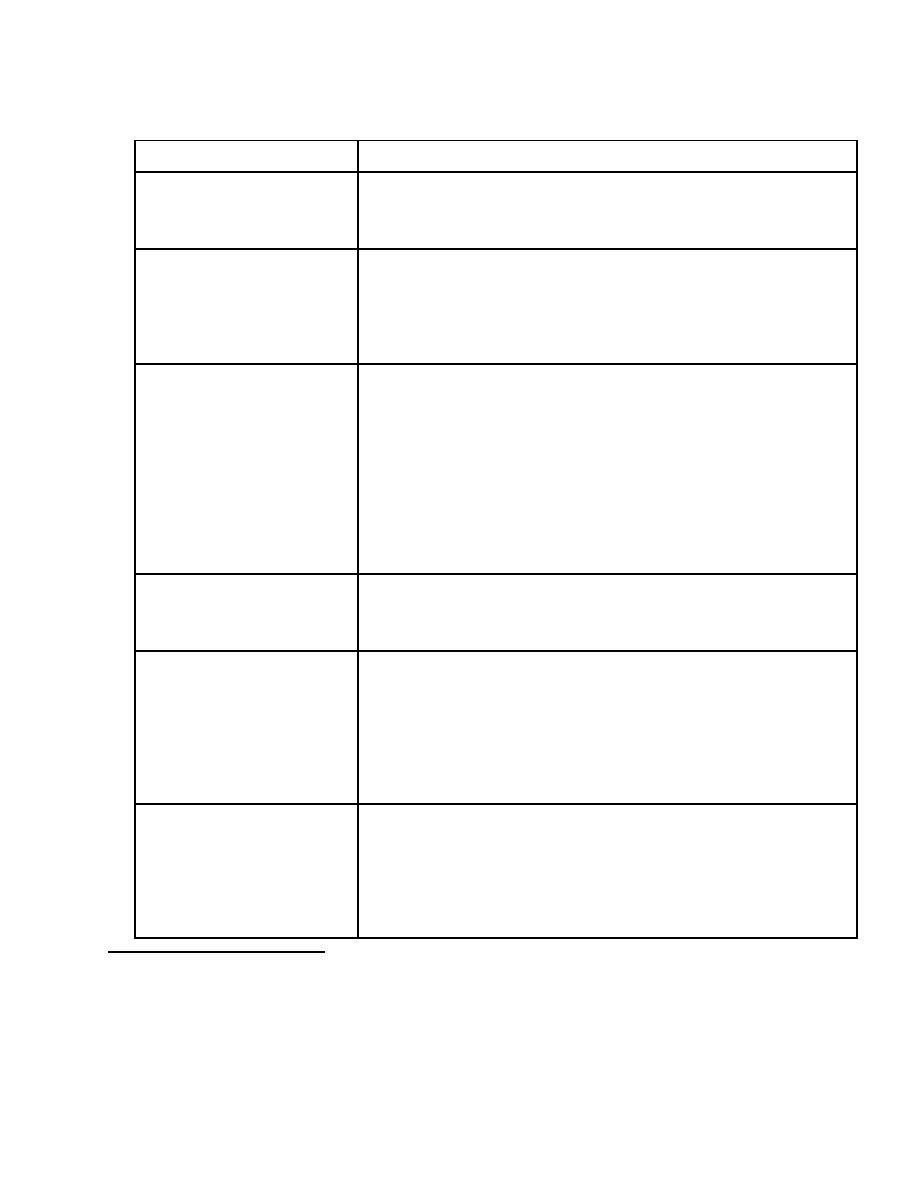 |
|||
|
|
|||
|
|
|||
| ||||||||||
|
|  DOE-HDBK-1139/3-2005
Sources11
Consolidated Requirements12
4.4.2.1 Smoking shall be permitted only in designated
NFPA 30, 5.-9.2
and properly identified areas.
4.4.2.2 Welding, cutting, and similar spark-producing
NFPA 30, 5.-9.3;
operations shall not be permitted in areas
containing flammable or combustible liquids
29CFR1910.106(e)(8)
until a written permit authorizing such work
has been issued.
4.4.2.3 All equipment (such as tanks, machinery, and
NFPA 30, 5.9.4;
piping) where an ignitable mixture could be
present shall be bonded or connected to a
29CFR1910.106(e)(6)(ii)
ground. The bond or ground or both shall be
physically applied or shall be inherently
present by the nature of the installation.
Electrically isolated sections of metallic
piping or equipment shall be bonded to the
other portions of the system or shall be
individually grounded.
4.4.332 Individual containers of flammable or combustible
29CFR1910.106(d)(2)(iii)
liquids shall not exceed the capacities listed in
29CFR1910.106, Table H-12.
4.4.4
In an office occupancy, containers of Class I liquids
NFPA 30, 4.5.5.2
that are outside of an inside liquid storage (see
definition) area shall not exceed a capacity of one
gallon (3.8 liters).
[EXCEPTION: safety cans (see definition) are
permitted up to a two-gallon capacity.]
4.4.5
In an office occupancy, not more than ten gallons (37.8
NFPA 30, 4.5.5.3
liters) of Class I and Class II liquids (see definition)
combined shall be kept in a single fire area (see
definition) outside of a storage cabinet or an inside
liquid storage area, unless the liquids are in safety cans
(see definition).
32
Glass or plastic containers up to one gallon in size may be used for Class IA or IB liquids if either (1) the liquid
would be rendered unfit for its intended use by contact with metal, (2) the liquid would corrode a metal container so
as to create a leakage hazard, (3) the process would require more than the allowed quantities of liquid of a single
assay lot to be used at one time, or (4) the process would require the maintenance of an analytical standard liquid of
a quality which is not met by the specified standards of liquids available, and the quantity of the analytical standard
liquid required for any one control process exceeds one-sixteenth the capacity of the container allowed under Table
1.
47
|
|
Privacy Statement - Press Release - Copyright Information. - Contact Us |